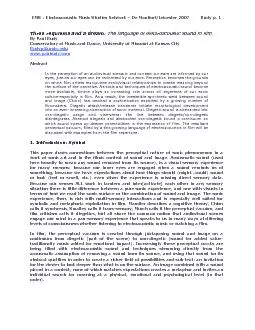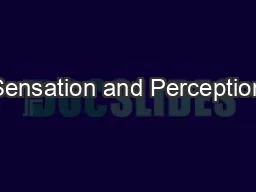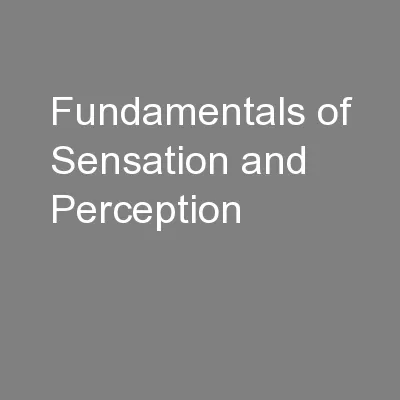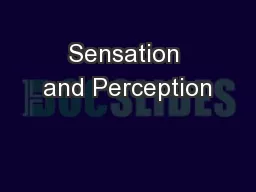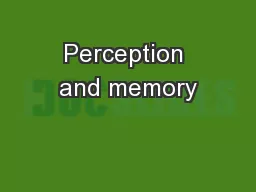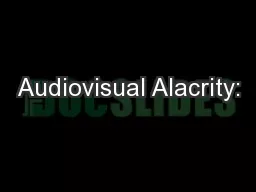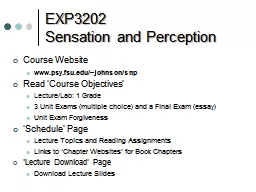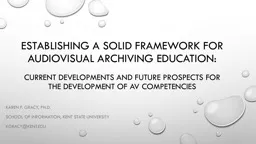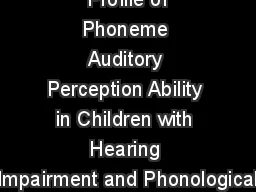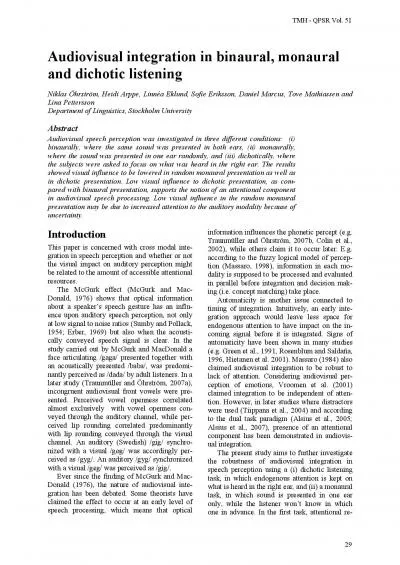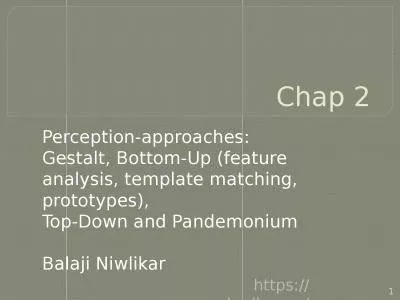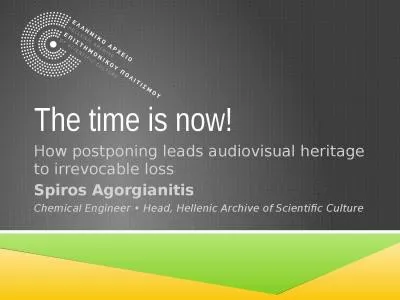PDF-Abstract In the perception of an audiovisual scenario and context our
Author : alida-meadow | Published Date : 2015-10-11
vate each other in any sensory situation there is little difference between a pure sonic experience and one with visuals in terms of how we read the sonic surface
Presentation Embed Code
Download Presentation
Download Presentation The PPT/PDF document "Abstract In the perception of an audiov..." is the property of its rightful owner. Permission is granted to download and print the materials on this website for personal, non-commercial use only, and to display it on your personal computer provided you do not modify the materials and that you retain all copyright notices contained in the materials. By downloading content from our website, you accept the terms of this agreement.
Abstract In the perception of an audiovisual scenario and context our: Transcript
Download Rules Of Document
"Abstract In the perception of an audiovisual scenario and context our"The content belongs to its owner. You may download and print it for personal use, without modification, and keep all copyright notices. By downloading, you agree to these terms.
Related Documents

